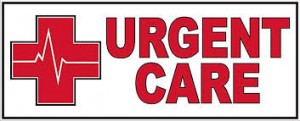UCs have sent a warning shot to primary care practices, but they didn’t, and can’t replace them.
About seven years ago, the California Healthcare Roundtable and Health Affairs sat down to prepare a white paper on the emerging phenomenon of urgent care centers, and what it might mean for primary care. At the time the group couldn’t agree that urgent care (UC) was a disruptive innovation, but it seemed clear to all participants that it represented a threat to primary care: The rise of UC, the group noted, would lead to 1) less preventive care; and, 2) concentrate acuity in primary care clinics. They wrote: “[Urgent care] means fewer patients per day, a higher intensity environment for providers, and potentially lower reimbursement.”
In particular, the group couldn’t understand if patients were choosing to leave primary care because they didn’t value having a PCP, or if they were settling for the inherent limitations of UC because cost and convenience outweighed its disadvantages:
Seventy-five percent [of UC customers] are women ages 28 to 42 and their children. Some hypothesize that this consumer group thinks of its health care relationships differently than do people of the baby boomer generation and older. The younger cohort often has no “medical home,” while baby boomers and older people tend to view the primary care physician as the center of their medical care. Discussants concurred that what the data do not reveal, however, is whether the medical “homelessness” of this younger group and its high relative use of retail clinics reflect how these consumers want to receive their care or is instead merely their experience (or is a function of the fact that they have fewer chronic conditions and thus need less care and care coordination).
Since the roundtable in 2007, there has been a flood of urgent care centers with ongoing rapid growth. The American Academy of Urgent Care estimates that there are around 9,300 UCs nationally. Across the country, clinics are sprouting like flowers, sometimes fueled by private equity investors, but often by hospitals and health systems who are reflexively installing UCs in repurposed strip malls, sometimes without a clear strategy other than keeping market share in an otherwise low margin business.
The reasons for growth, according to the American Academy of Urgent Care? Primarily extended hours (as compared to primary care) and better wait times and lower prices than the ED.
As the private-equity fueled urgent care bubble expands, here’s my prediction on how this all plays out: Don’t bet the farm on UCs being the final answer to the consumer’s search for value. For all of UC’s utility, it’s also possible that urgent care may just get out-maneuvered by the next generation of primary care.
First, I don’t believe that that UCs are a disruptive innovation that has negated the value of primary care. They’re an incremental improvement in care delivery that arose in response to two separate areas of consumer dissatisfaction in medicine: 1) overburdened emergency departments who’ve been unable to batch patients by acuity leading to long process and wait times; and, 2) inflexible primary care practices with no incentive to be consumer oriented.
As a primary care alternative (and, I don’t want to address the UC value proposition for emergency department patients here — though it’s quite high and a different story) UC offers many consumers a Faustian bargain: In exchange for transparent and affordable costs, extended hours with reasonable cycle times — plus ready access to assurance (what the California whitepaper calls “emotional care”) — consumers give up integration, coordination of care, preventive medicine and a loss of relationships with providers who know them.
UC’s competitive advantages are easily overcome by a primary care system that develops a little operational rigor. Extended hours, transparent pricing and process flow analysis are business 101, and particularly as ambulatory practices consolidate and large physician groups grow, they basics will be easy to implement in primary care. What we’ll see (if my thinking is right) is primary care 2.0: consumer-focused, well managed and with a move toward higher acuity in-clinic diagnostics and treatment. Delivered by people you know, in a system you know.
UCs have sent a warning shot to primary care practices, but they didn’t, and can’t replace them. The next step in this chess game is the re-emergence of a renewed and consumer-focused primary care, just in time to respond to a graying America’s need for integrated care. We’re seeing examples of this consumer focus on the extremes of the primary care organizational spectrum — small subscription groups (such as Atlas MD in Kansas) who refuse to take insurance but offer care on demand, and at large physician groups who have the resources to add extended hours and in-house diagnostic services.
Marc-David Munk is chief medical officer, Reliant Medical Group. He blogs atConsidering American Healthcare.


